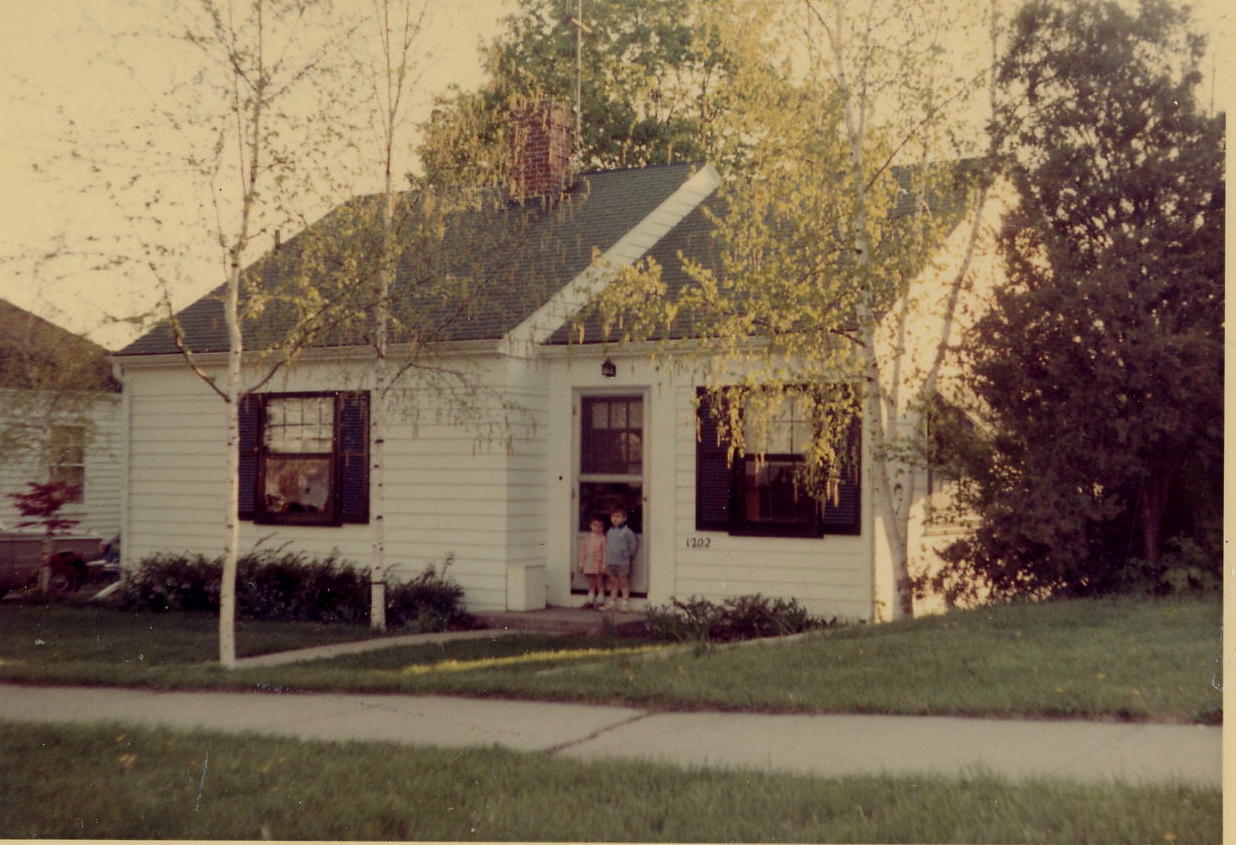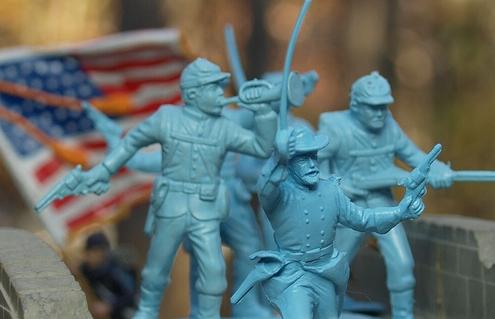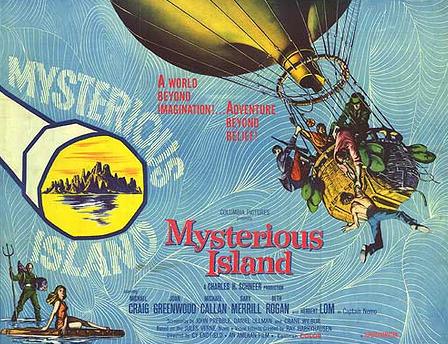 Most of my posts lately have been related to the various paths forward for youth education in a more formal sense, but I feel that much (most?) profound learning takes place in more informal settings… like play. So rolling back the clock to revisit my own youth…
Most of my posts lately have been related to the various paths forward for youth education in a more formal sense, but I feel that much (most?) profound learning takes place in more informal settings… like play. So rolling back the clock to revisit my own youth…
I am not sure what initially inspired me, at age five, to become obsessed with dinosaurs. Could be it was going to the University of Michigan natural history museum and seeing the big reconstructed T-Rex bones or the tableaus behind glass of small scale dinosaur models in the best guess of what their living environment looked like. Or maybe it was seeing the movie, “The Lost World” (the 1925 version) based on the book by Arthur Conan Doyle, of Sherlock Holmes fame. The story was a wonderful tale about scientists and adventurers who travel to a previously uncharted plateau in South America and discover that the stories of living dinosaurs there were true (kind of the progenitor to “Jurassic Park”).
Probably both were inspirational, and lucky for me at the museum they sold these plastic versions of all the dinosaur species with the scientific name and English translation inscribed on the bottom. Other than the obvious rock star “Tyrannosaurus Rex” (which translates to “Tyrant Lizard King”… how cool is that!) one of my herbivore favorites was “Stegosaurus” (“Roof Lizard”), with its spiked armor plates down its spine, the obvious inspiration for the more formidable Godzilla, the pulp sci-fi movie iconic import from Japan.

That brings up the subject of the basement. Ours became a play heaven for a five year old kid with an untamed and unschooled imagination, a consecrated space where I could spread my toys on the unfinished concrete slab floor and not have to clean them up at night. My parents even let my brother and I use chalk and draw things on the concrete slab floor, like roads, shorelines, oceans and such.
 Anyway, I loved stories of adventure, whether books, television or the movies. After learning the storyline and characters, I would then head to the basement to reenact, expand and spin-off on the story with my assortment of, what later as a parent I came to call, “imagination toys”. These included plastic figures (soldiers, civilians, animals and of course dinosaurs), building materials (Tinker Toys, Lincoln Logs, Erector Sets, etc.) and various cardboard boxes and containers that I could cut up (with non-pointy scissors) and Scotch tape back together into boats and submarines.
Anyway, I loved stories of adventure, whether books, television or the movies. After learning the storyline and characters, I would then head to the basement to reenact, expand and spin-off on the story with my assortment of, what later as a parent I came to call, “imagination toys”. These included plastic figures (soldiers, civilians, animals and of course dinosaurs), building materials (Tinker Toys, Lincoln Logs, Erector Sets, etc.) and various cardboard boxes and containers that I could cut up (with non-pointy scissors) and Scotch tape back together into boats and submarines.
 Two of my all-time favorite movies were Jules Verne’s “20,000 Leagues under the Sea” and its sequel “Mysterious Island.” Later, at around age eleven I would actually read the books as well. These were stories set in the age of the U.S. civil war, full of futuristic technology and colorful characters. Captain Nemo in particular, was a mad genius who was trying to use his incredible submarine in a quixotic anti-war crusade to destroy all the warships in the world. He finally retired to a deserted island and played with strange forces (presumably nuclear radiation) to create mutant creatures (such as chickens that were 10 feet tall) to try and end the food shortages that he felt were a key cause driving humans to fight war after war.
Two of my all-time favorite movies were Jules Verne’s “20,000 Leagues under the Sea” and its sequel “Mysterious Island.” Later, at around age eleven I would actually read the books as well. These were stories set in the age of the U.S. civil war, full of futuristic technology and colorful characters. Captain Nemo in particular, was a mad genius who was trying to use his incredible submarine in a quixotic anti-war crusade to destroy all the warships in the world. He finally retired to a deserted island and played with strange forces (presumably nuclear radiation) to create mutant creatures (such as chickens that were 10 feet tall) to try and end the food shortages that he felt were a key cause driving humans to fight war after war.
My dad had been in World War Two, and I was fascinated with all aspects of these human conflicts of men, weapons, machines, strategy and logistics. I would check books out of the library and read about wars, battles, generals, warships, warplanes and weapons. I was a bit of a shy kid myself, who shied from any fight or any other heated confrontation in real life, but was intrigued with the passion of the committed warrior. Yet I also resonated with captain Nemo’s quest to end all wars. I also found the U.S. civil war particularly intriguing, and the blue and gray soldiers were readily available at a dollar a bagful at the local toy stores.
So down in the basement, armed with the story lines from Jules Verne movies, my blue and gray soldiers, my dinosaurs, Lincoln logs, and assorted card board boxes and tape, I was ready to spin off my own epic stories. First I chalked out one quadrant of the basement as “civilization”. With Lincoln Logs I built a fort where the blue (Union) soldiers were. Across the basement in the area of my dad’s office, that was “Jinx Island”. An area rich with minerals that the Union needed to mine for war materials. The island was also inhabited by dinosaurs, plus Captain Nemo lurked in his hidden submarine.
“Lieutenant Cord”, a blue soldier my brother and I had named who looked like an officer brandishing a pistol, was in charge of the initial expedition to the island to set up the mining operation. Soldiers, supplies and mining equipment (built with Tinker Toys) were loaded into a large rectangular barge (a customized cardboard box), and with an escort of warships headed for Jinx Island. Captain Nemo attacked the convoy with his submarine but managed only to sink one of the escorts.
Once on the island, Lieutenant Cord and company set up camp and began the mining operation in a huge cavern (the space under my dad’s desk) that was rich with precious minerals, needed for the war effort. Dinosaurs (of course) attacked the camp, wreaked havoc and were finally repelled at great loss of life, and acts of individual heroism. The barge made a successful journey to the island bringing reinforcements and materials for fortifying the camp/mine.
My dad managed to do his work that week at his desk avoiding the camp and the lurking “thundering lizards”. I think he got a kick out of the whole thing and had me explain to him all the different aspects of the “island”.
In one final pitched assault against the fortified compound, the monstrous ancient reptiles were on the verge of breaking thru and destroying the operation, except for the tremendous courage of the same Lieutenant Cord, who lost his own life protecting his men and stemming the breach. Every man on the expedition, plus the entire Union army back home mourned the loss of this courageous and charismatic leader. We staged an official honoring ceremony on the island and his body was returned to civilization on the barge. Even Nemo honored him by not attacking the funeral convoy.
Then came a difficult issue for my brother and I, the two creators of this epic, to resolve. The Lieutenant Cord figure was our favorite, of all the blue and gray plastic soldiers. If he was truly dead, then we should not recycle him for other characters in future stories. But that meant we would have to play all future scenarios without our prized figure. After much soul-searching, we finally agreed, and Lieutenant Cord was buried in full military honors, with both blue and gray soldiers present in our backyard. I believe I wrote a eulogy which I read at the ceremony. My brother designed the tombstone.
I don’t think we ever dug him up later. Now some 45 years later he may still be under the grass somewhere behind our house on Prescott Street, for plastic of course never decomposes…
So as a five-year-old in my self-initiated play I was already dealing with issues of narrative, human drama, logistics, leadership, archeology, history, ritual, construction, and geography, just to name a few. I was developing my own take on the elements of the human story, that I would conatinue to read about in books, see in movies and TV shows, and hear about from adults I knew telling the real stories of their lives.
[…] childhood of adventure, self-directed discovery, and creative fantasies (see also my post “Plastic Dinosaurs and the Tragedy of Jinx Island”). The opportunities this gave me to develop social and collaboration skills (playing with the other […]
This is very fascinating, You’re an excessively skilled blogger. I have joined your rss feed and sit up for in search of more of your great post. Also, I have shared your site in my social networks